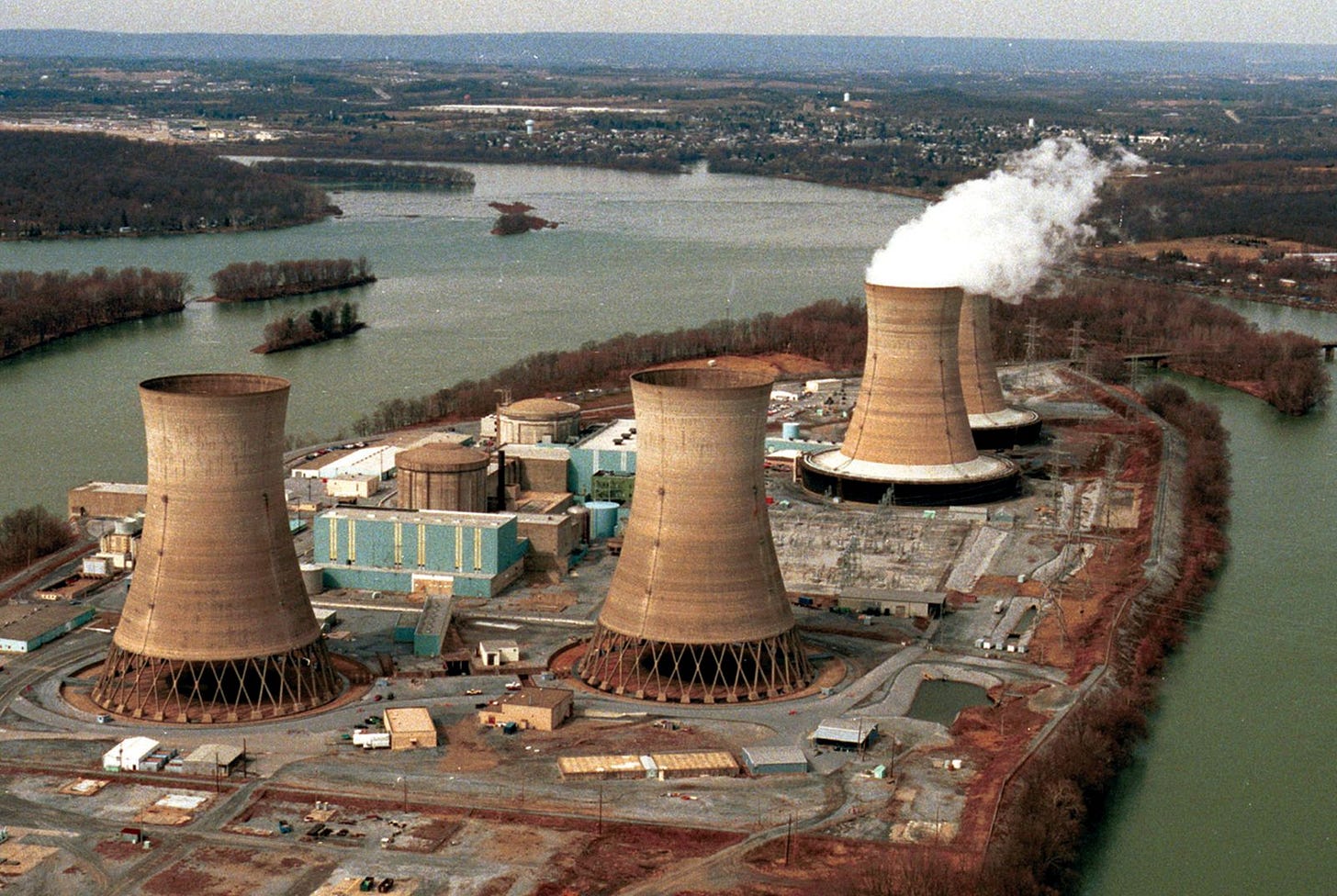The Three Mile Island Affair: A Most Regrettable Oversight in Nuclear Manners
The world, as you well know, is built upon the delicate balance of brilliance and folly. Nowhere is this more apparent than in the realm of engineering, where a single oversight—a misplaced rivet, an improperly latched door, a valve of questionable loyalty—can unravel the grandest of intentions.
This brings us to the Three Mile Island nuclear incident, a debacle so preventable, so egregiously mismanaged, that one cannot help but marvel at the sheer theatricality of it all. A valve that refused to close, a light that told a misleading tale, and a series of decisions so ill-advised, they might as well have been made over a leisurely lunch with an abundance of wine.
A Reactor Designed with an Unfortunate Sense of Humor
The Three Mile Island Nuclear Generating Station, nestled in Pennsylvania, was part of the great nuclear promise of the 20th century — a testament to humanity’s ambition to harness the atom for progress rather than destruction.
As one would expect, such a facility was brimming with fail-safes, redundancies, and automated responses, all designed to ensure that no single failure could spell catastrophe. Except, of course, when those very systems conspired against themselves in the most spectacular fashion.
At the heart of the matter lay a pressure relief valve, whose duty was simple yet noble: when pressure in the reactor became excessive, it would open, release steam, and close promptly thereafter.
It was an elegant system. A perfect gentleman’s agreement between man and machine. Until it wasn’t.
The Series of Misfortunes That Nearly Brought a Reactor to Its Knees
On the morning of March 28, 1979, a minor, utterly mundane failure in the secondary cooling system set off a chain of events that would quickly escalate beyond all proportion.
The valve, in an act of open rebellion, remained stuck open. Coolant—essential for preventing the reactor from overheating—began to escape.
The indicator light, that duplicitous little fiend, assured the operators that the valve was shut. It was not.
The operators, believing the coolant levels were too high rather than too low, shut down emergency cooling systems. A decision so counterproductive, so marvelously incorrect, that one can only assume they were under the influence of extraordinarily misleading data.
The temperature soared. With each passing moment, the uranium fuel rods were subjected to heat levels exceeding 4,300°F (~2,370°C)—hot enough to melt portions of the reactor core.
The realization arrived painfully late. By the time the operators discovered the true nature of their predicament, a significant portion of the reactor core had succumbed to the heat, an irreversible insult to nuclear engineering.
It is here that we must pause and recognize a moment of unexpected triumph: the containment structure held. Though half the reactor core melted, the facility did not descend into total catastrophe.
And yet, one cannot escape the overwhelming sense that this was far too close a call for comfort.
What We Have Learned (and Should Have Known All Along)
Lies, Damned Lies, and Indicator Lights – A control system that reports what should have happened rather than what actually did is not a control system at all, but a masterclass in deception. Future reactor designs eliminated this absurdity.
Redundancy is Not Merely for Show – Cooling systems were revised and reinforced, ensuring that future reactors would have multiple layers of backup mechanisms to prevent overheating.
Perhaps We Should Train the Humans? – While the machines certainly played their part in this disaster, let us not forget the operators, whose training failed to prepare them for ambiguous or misleading signals. Nuclear plants completely overhauled operator education and emergency response training as a result.
Regulations: Not Just a Pesky Form of Bureaucracy – The Nuclear Regulatory Commission (NRC), no doubt red-faced with embarrassment, swiftly enacted stricter safety measures, including real-time radiation monitoring and mandatory fail-safe protocols to ensure that one rogue valve could never again bring an entire industry into disrepute.
The Grand Consequence of It All
In the immediate aftermath, no one died. Radiation exposure, while not ideal, was minimal compared to the scale of what could have transpired.
But the true damage was not to life or land, but to the reputation of nuclear power itself. Three Mile Island became the symbol of nuclear risk, an event so deeply embedded in the public’s memory that it stalled nuclear energy expansion in the United States for decades.
It is a reminder that engineering is as much about perception as it is about physics.
If You Were in That Control Room…
The light before you says the valve is closed. The coolant levels tell a different story. Do you trust the instruments, or your instincts?
A lesson from Three Mile Island: when given conflicting information, always assume the worst. It might just save the day.




